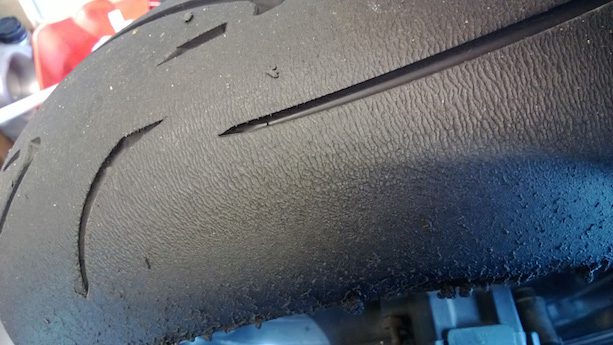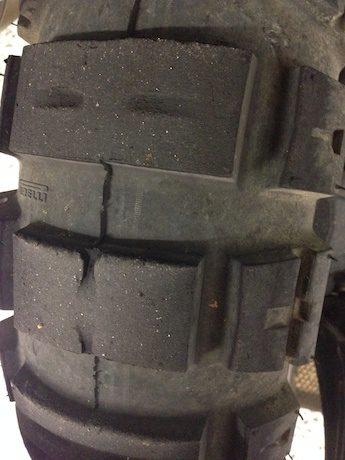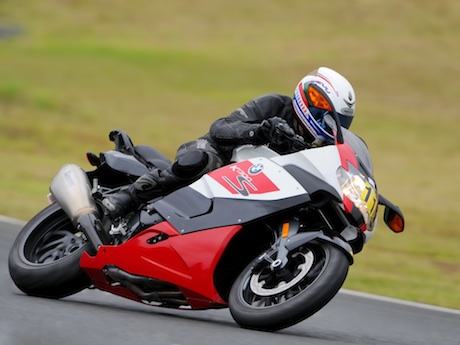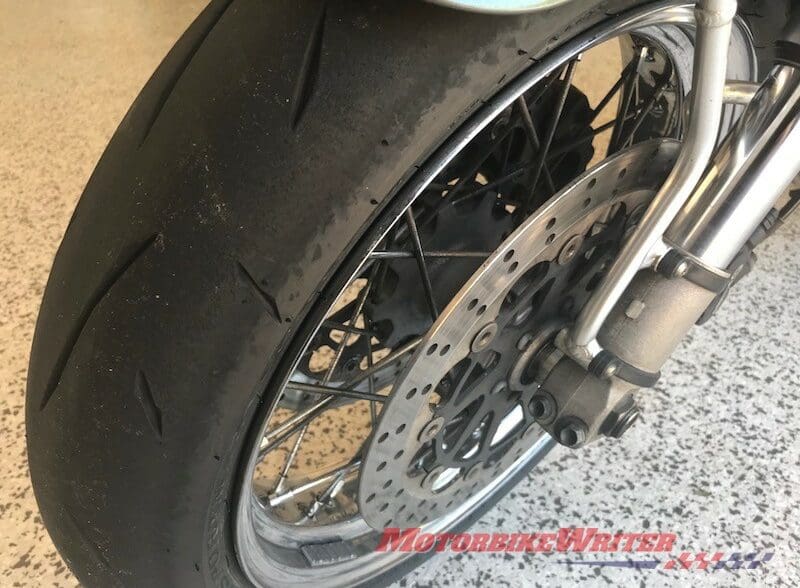Chicken strips can be one of the biggest causes of embarrassment for riders and may even be a safety risk.
In case you’ve been riding in a vacuum, “chicken strips” is a term for the shiny, unused part of a motorcycle tyre’s tread.
They signify that the rider hasn’t leaned the bike over very far in the corners and are therefore testament to their apparent lack of talent and bravery, hence the term “chicken”.
Chicken strips can be a source of ridicule and embarrassment among the riding fraternity.
But there is far more to it than that.
Different strips
For a start, there can be a big difference in chicken strips on the front and rear tyres.
Talented/brave riders with no chicken strips on the back can still have chicken strips on the front.
And vice versa.
These are more testament to the riding style of the rider.
No chicken strips on the back, but strips on the front may mean the rider brakes early, turns in late and gets on the gas early while the bike is still leaned over.
No strips on the front, but strips on the back means they go hard into a corner and get on the gas later when the bike is upright again.
But even brave and talented riders can still have chicken strips.
Different tyres and bikes

It can depend on the type of motorcycle and the type of tyres.
Some bikes, usually cruisers, run out of cornering clearance thanks to low footpegs, exhaust, side/centre stands and other hard parts.
So the bike can never use the full width of the tread.
Adventure bikes can be the opposite with high pipes and pegs that will never obstruct cornering clearance.
However, their knobby tyres can become really squeamish when run right out to the tread edge.

Tyre profile can also affect chicken strips.
Usually low and wide tyres such as on sports bikes and some cruisers provide a flatter characteristic to the tyre which makes it easier to use the full width of the tread.
Taller and narrower touring and adventure tyres have a much rounder cross section which makes it more difficult to use the full tread width.
How to delete chicken strips

If you still bow to peer pressure and are concerned about the chicken strips on your tyres, don’t get the power sander out! That is just destroying your tyres.
Instead, we suggest heading to a track where you can explore the tread limits much easier and with more safety.
Chicken strips are slippery as the tread has not been “broken in”.
So trying to delete your strips can result in exposing your bike to slippery parts of your tyre with obvious safety issues.
The glossy and slippery tread surface should be treated with respect and caution.

The best way to break in a tyre or to lose that gloss on the edge of your tread is to heat up the tyres.
That doesn’t necessarily mean leaning it over. A long-distance high-speed highway ride will heat the entire width of the tyre, even though the tread edge has not touched the road surface.
So before you go exploring the limits of your tread and lean angle, go for a long ride, then gradually start leaning more and more.


